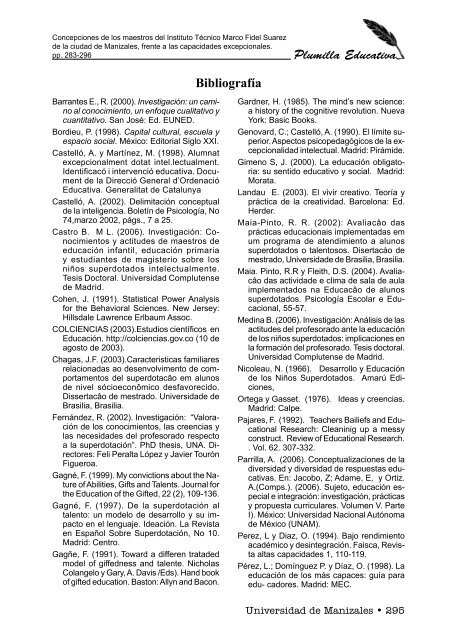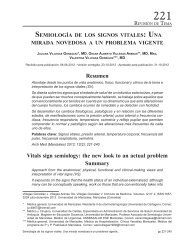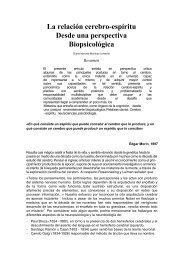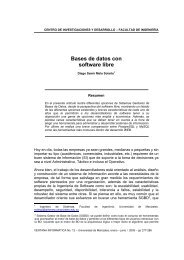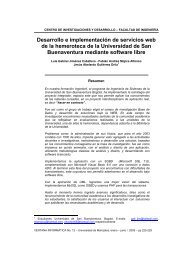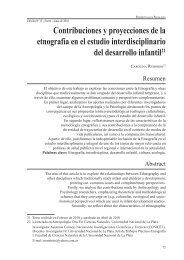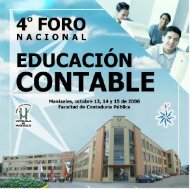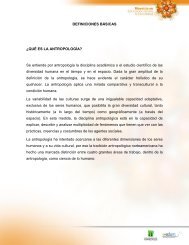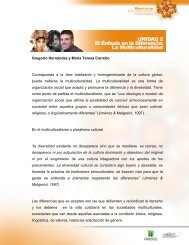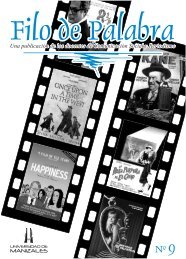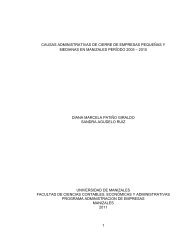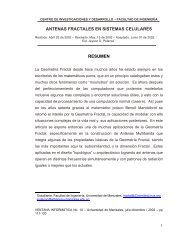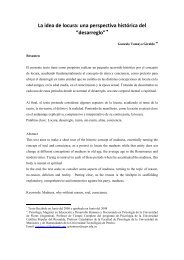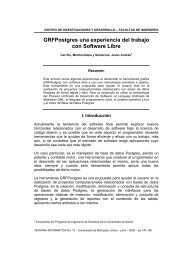Plumilla Educativa 7.pdf - Universidad de Manizales
Plumilla Educativa 7.pdf - Universidad de Manizales
Plumilla Educativa 7.pdf - Universidad de Manizales
- No tags were found...
You also want an ePaper? Increase the reach of your titles
YUMPU automatically turns print PDFs into web optimized ePapers that Google loves.
Concepciones <strong>de</strong> los maestros <strong>de</strong>l Instituto Técnico Marco Fi<strong>de</strong>l Suarez<strong>de</strong> la ciudad <strong>de</strong> <strong>Manizales</strong>, frente a las capacida<strong>de</strong>s excepcionales.pp. 283-296<strong>Plumilla</strong> <strong>Educativa</strong>BibliografíaBarrantes E., R. (2000). Investigación: un caminoal conocimiento, un enfoque cualitativo ycuantitativo. San José: Ed. EUNED.Bordieu, P. (1998). Capital cultural, escuela yespacio social. México: Editorial Siglo XXI.Castelló, A. y Martínez, M. (1998). Alumnatexcepcionalment dotat intel.lectualment.I<strong>de</strong>ntificacó i intervenció educativa. Document<strong>de</strong> la Direcció General d’Or<strong>de</strong>nació<strong>Educativa</strong>. Generalitat <strong>de</strong> CatalunyaCastelló, A. (2002). Delimitación conceptual<strong>de</strong> la inteligencia. Boletín <strong>de</strong> Psicología, No74,marzo 2002, págs., 7 a 25.Castro B. M L. (2006). Investigación: Conocimientosy actitu<strong>de</strong>s <strong>de</strong> maestros <strong>de</strong>educación infantil, educación primariay estudiantes <strong>de</strong> magisterio sobre losniños superdotados intelectualmente.Tesis Doctoral. <strong>Universidad</strong> Complutense<strong>de</strong> Madrid.Cohen, J. (1991). Statistical Power Analysisfor the Behavioral Sciences. New Jersey:Hillsdale Lawrence Erlbaum Assoc.COLCIENCIAS (2003).Estudios científicos enEducación. http://colciencias.gov.co (10 <strong>de</strong>agosto <strong>de</strong> 2003).Chagas, J.F. (2003).Caracteristicas familiaresrelacionadas ao <strong>de</strong>senvolvimento <strong>de</strong> comportamentos<strong>de</strong>l superdotacâo em alunos<strong>de</strong> nivel sócioeconômico <strong>de</strong>sfavorecido.Dissertacâo <strong>de</strong> mestrado. <strong>Universidad</strong>e <strong>de</strong>Brasilia, Brasilia.Fernán<strong>de</strong>z, R. (2002). Investigación: “Valoración<strong>de</strong> los conocimientos, las creencias ylas necesida<strong>de</strong>s <strong>de</strong>l profesorado respectoa la superdotación”. PhD thesis, UNA. Directores:Feli Peralta López y Javier TourónFigueroa.Gagné, F. (1999). My convictions about the Natureof Abilities, Gifts and Talents. Journal forthe Education of the Gifted, 22 (2), 109-136.Gagné, F. (1997). De la superdotación altalento: un mo<strong>de</strong>lo <strong>de</strong> <strong>de</strong>sarrollo y su impactoen el lenguaje. I<strong>de</strong>ación. La Revistaen Español Sobre Superdotación, No 10.Madrid: Centro.Gagñe, F. (1991). Toward a differen trata<strong>de</strong>dmo<strong>de</strong>l of giffedness and talente. NicholasColangelo y Gary, A. Davis /Eds). Hand bookof gifted education. Baston: Allyn and Bacon.Gardner, H. (1985). The mind’s new science:a history of the cognitive revolution. NuevaYork: Basic Books.Genovard, C.; Castelló, A. (1990). El límite superior.Aspectos psicopedagógicos <strong>de</strong> la excepcionalidadintelectual. Madrid: Pirámi<strong>de</strong>.Gimeno S, J. (2000). La educación obligatoria:su sentido educativo y social. Madrid:Morata.Landau E. (2003). El vivir creativo. Teoría ypráctica <strong>de</strong> la creatividad. Barcelona: Ed.Her<strong>de</strong>r.Maia-Pinto, R. R. (2002): Avaliacâo dasprácticas educacionais implementadas emum programa <strong>de</strong> atendimiento a alunossuperdotados o talentosos. Disertacào <strong>de</strong>mestrado, <strong>Universidad</strong>e <strong>de</strong> Brasilia, Brasilia.Maia. Pinto, R.R y Fleith, D.S. (2004). Avaliacâodas activida<strong>de</strong> e clima <strong>de</strong> sala <strong>de</strong> aulaimplementados na Educacâo <strong>de</strong> alunossuperdotados. Psicología Escolar e Educacional,55-57.Medina B. (2006). Investigación: Análisis <strong>de</strong> lasactitu<strong>de</strong>s <strong>de</strong>l profesorado ante la educación<strong>de</strong> los niños superdotados: implicaciones enla formación <strong>de</strong>l profesorado. Tesis doctoral.<strong>Universidad</strong> Complutense <strong>de</strong> Madrid.Nicoleau, N. (1966). Desarrollo y Educación<strong>de</strong> los Niños Superdotados. Amarú Ediciones,Ortega y Gasset. (1976). I<strong>de</strong>as y creencias.Madrid: Calpe.Pajares, F. (1992). Teachers Bailiefs and EducationalResearch: Cleaninig up a messyconstruct. Review of Educational Research.. Vol. 62. 307-332.Parrilla, A. (2006). Conceptualizaciones <strong>de</strong> ladiversidad y diversidad <strong>de</strong> respuestas educativas.En: Jacobo, Z; Adame, E, y Ortiz.A.(Comps.). (2006). Sujeto, educación especiale integración: investigación, prácticasy propuesta curriculares. Volumen V. ParteI). México: <strong>Universidad</strong> Nacional Autónoma<strong>de</strong> México (UNAM).Perez, L y Diaz, O. (1994). Bajo rendimientoacadémico y <strong>de</strong>sintegración. Faisca, Revistaaltas capacida<strong>de</strong>s 1, 110-119.Pérez, L.; Domínguez P. y Díaz, O. (1998). Laeducación <strong>de</strong> los más capaces: guía paraedu- cadores. Madrid: MEC.<strong>Universidad</strong> <strong>de</strong> <strong>Manizales</strong> • 295


